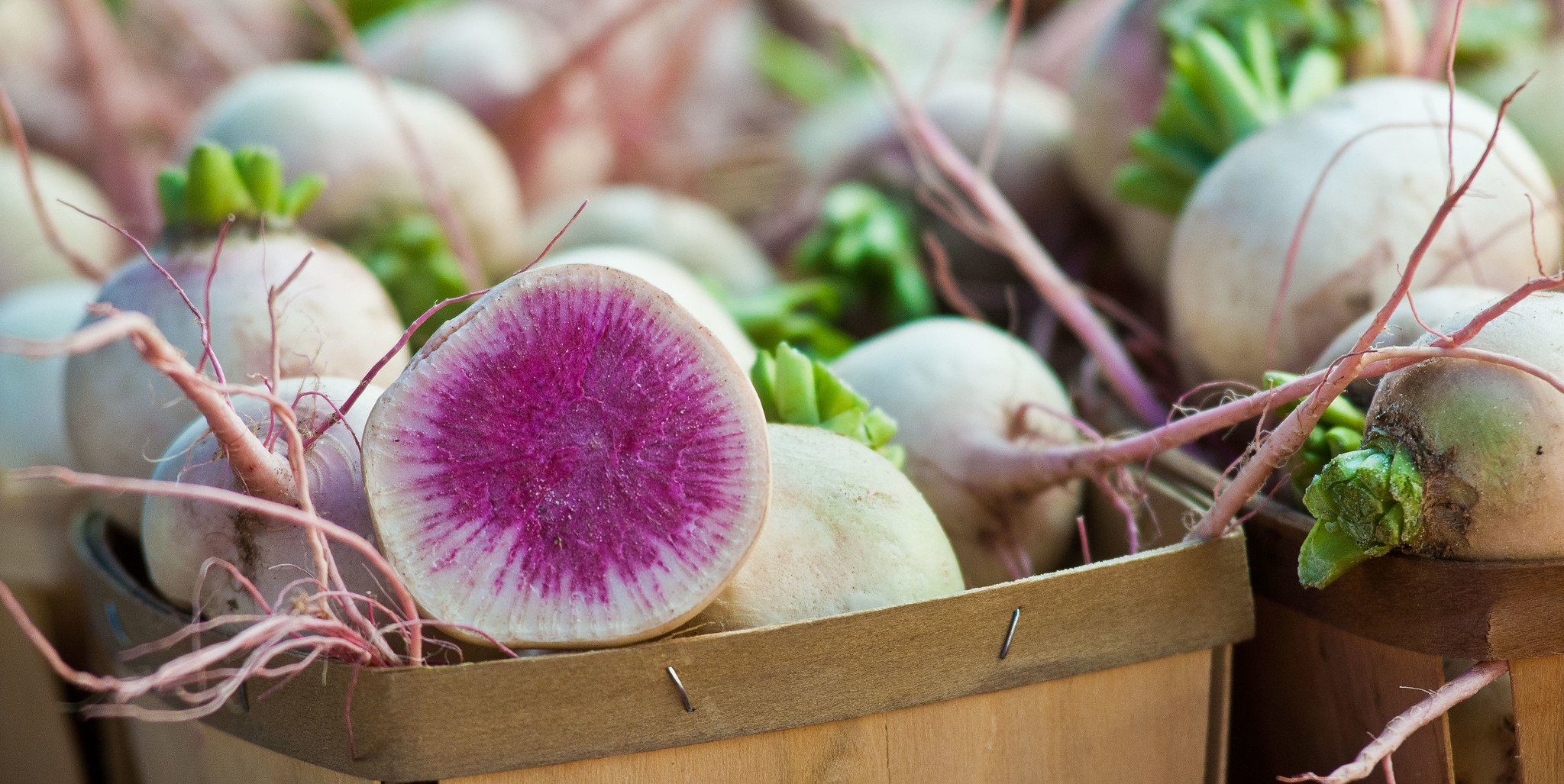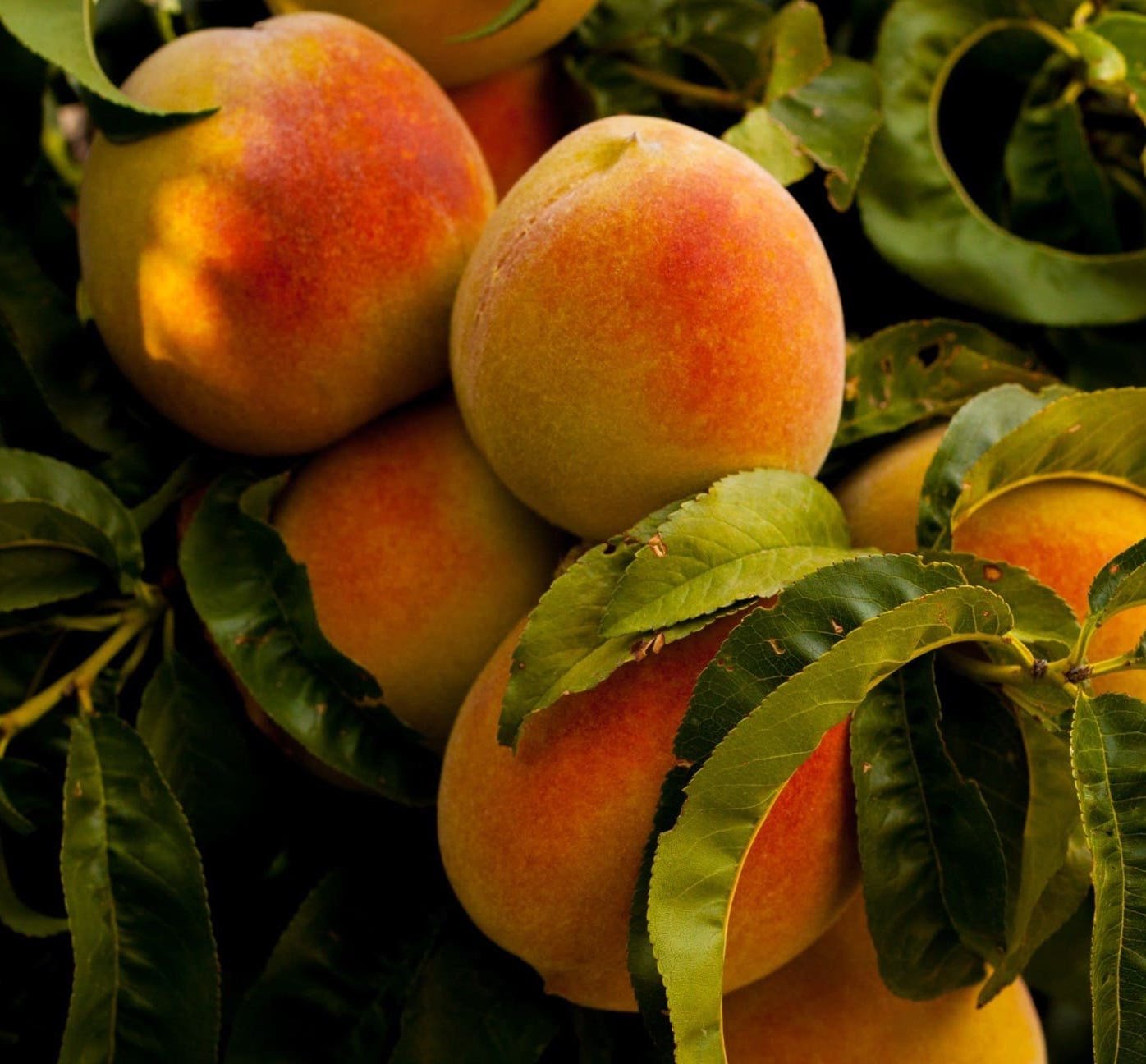
The 5 Most Unusual Veggies Waldo County Bounty Distributes to Food Pantries
Published February 17, 2023
By Mattie John Bamman
Have you ever sampled a garlic scape? How about a locally grown oyster mushroom or watermelon radish? In Waldo County, we have more than 50 farms and many are passionate about growing lesser known fruits and vegetables to fill market niches as interests grows around these creative crops. As Waldo County Bounty increases access to locally grown foods through our Farm-to-Pantry and Gleaning programs, we are also increasing access to diverse crops.
Our programs depend on ongoing feedback from local food pantry and soup kitchen coordinators, and we do primarily distribute popular fruits and vegetables based on client demand. That said, we sometimes have the opportunity to glean or distribute more adventurous crops thanks to our creative farmers.
Below, learn more about five uncommon crops Waldo County Bounty has distributed to food pantries and soup kitchens. Thanks to our partners at Maine SNAP-Ed and their partners Merrymeeting Food Council, you can also find links to nutrition information, techniques for preparing the produce varieties, and recipes to bring out their extraordinary tastes.
1. Garlic Scapes
A long, thin, twisty crop, garlic scapes grow out of the top of the garlic plant. “Look for them in late June and early July, when farmers harvest the tops of garlic before the bulbs are ready for harvest,” says Daybreak Growers Alliance co-owner Colleen Hanlon-Smith. “Later in the season, you’ll find the garlic bulbs available in multiple forms—green, uncured, cured, and dried." Garlic scapes have the snap of asparagus but with a mild garlic taste. SNAP-Ed and Merrymeeting Food Council say you can grill, roast, and saute garlic scapes and use them in place of garlic in most recipes. They are a source of fiber, vitamins A and C, and antioxidants, and they’re great with eggs, pasta, and pizza. Check out a tasty recipe for Garlic Scape Scrambled Eggs here.
2. Watermelon Radishes
These brilliantly colored radishes have a mild peppery flavor and a powerfully crunchy texture. They’re actually a type of daikon radish, which is a large radish type commonly used in Chinese and Japanese cuisines. Find a recipe for Roasted Root Vegetable Salad from SNAP-Ed here (you can substitute watermelon radish for daikon radish).
3. Locally Grown Oyster and Shiitake Mushrooms
Most of the time, we find the same two or three mushroom varieties in the grocery store, but there are thousands of edible mushroom types, some of which taste peppery, crunchy—even anise-y! Our Farm-to-Pantry program has delivered locally grown shiitake and oyster mushrooms from Moorit Hill Farm in the town of Troy. Cook with these mushrooms as you would other mushrooms to have fun exploring fungi.
4. Warm-Weather Fruits
Did you know farmers can grow watermelons and peaches in the cool Waldo County climate? In fact, they’ve been doing so for decades, but timing the season just right and finding your local source can take work. “It was a great day when Johnny’s Selected Seeds reached out with an offer to glean watermelon,” says Veggies For All coordinator Allie Smith. SNAP-Ed provides a recipe for a Watermelon Cooler as well as fresh Peach Salsa.
5. Bok Choi
Bok choi is commonly found in Asian cuisines, but it’s a newer crop in Waldo County farmers markets. It has firm white stalks and crisp green leaves that add crunch and a slightly sweet cabbage flavor to dishes. According to our partners at SNAP-Ed, bok choi is a good source of vitamins C, K, and A, as well as beta carotene and fiber, and it is delicious in soups, stews, and more. Check out the Stir-Fried Bok Choi with Garlic recipe here.




